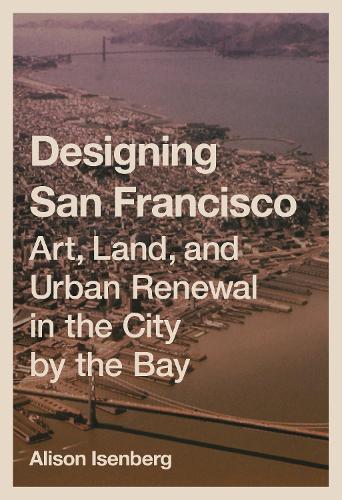
Designing San Francisco: Art, Land, and Urban Renewal in the City by the Bay
(Paperback)
Available Formats
Publishing Details
Designing San Francisco: Art, Land, and Urban Renewal in the City by the Bay
By (Author) Alison Isenberg
Princeton University Press
Princeton University Press
2nd January 2025
United States
Classifications
General
Non Fiction
History of architecture
History of the Americas
Local history
Urban and municipal planning and policy
711.40979461
Physical Properties
Paperback
440
Width 165mm, Height 241mm
Description
A major new urban history of the design and development of postwar San Francisco Designing San Francisco is the untold story of the formative postwar decades when U.S. cities took their modern shape amid clashing visions of the future. In this pathbreaking and richly illustrated book, Alison Isenberg shifts the focus from architects and city plann
Reviews
"Winner of the 2018 PROSE Award for Architecture & Urban Planning, Association of American Publishers"
"Isenberg, a professor of history at Princeton University, dug deep to capture the transitional years when the city's establishment was on the verge of being altered by cultural forces that it could not control. . . . [Designing San Francisco] deepens our understanding of how todays landscape came to beand the bullets we dodged along the way."---John King, San Francisco Chronicle
"Designing San Francisco is an outstanding contribution to the growing literature on the City by the Bay, and is indeed one of the finest books in recent memory about American city building in the postwar period."---Ocean Howell, American Historical Review
"The urban historian Alison Isenbergs Designing San Francisco is, among its many other virtues, a vital text for helping landscape architects think through this dilemma. . . . Isenberg is a clear and engaging writer who is both transparent and persuasive in presenting her own angle on the story. . . . Designing San Francisco is a vital critique of the standard narrative of design authorship."---Justin Parscher, Landscape Architecture Magazine
"In Designing San Francisco: Art, Land, and Urban Renewal in the City by the Bay, the historian Alison Isenberg points to a shift around this time in the way San Francisco practiced its urban renewal. Instead of being designed from on high, in the style of Robert Moses in New York, the postwar city grew largely through collaborative planning. This didnt mean that messy neighborhoods were left alone to find their internal order (as in Jane Jacobss preservationist ideal) but that artists, property managers, activists, and others all got involved."---Nathan Heller, The New Yorker
Author Bio
Alison Isenberg is professor of history at Princeton University and founding director of the Princeton-Mellon Initiative in Architecture, Urbanism, and the Humanities. She is the author of Downtown America: A History of the Place and the People Who Made It.
